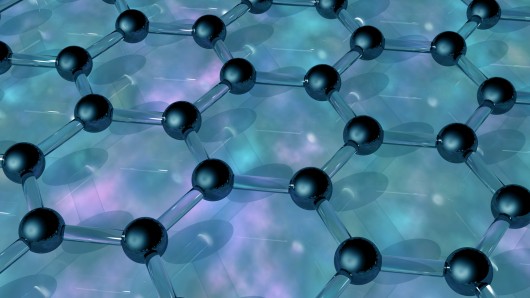
While well known for its unique electromechanical properties, graphene may also prove key in preventing cancer tumor recurrence. A drawback of traditional cancer treatment with radiation and chemotherapy is that the primary developmental source of future tumors is not eradicated. Cancer stem cells, or CSCs, can survive treatment and give rise to recurring tumors, metatasis, and drug resistance after repeated treatments. Researchers from the University of Manchester and the University of Calabria have discovered that graphene oxides targets and neutralize CSCs in a manner that is not yet fully understood.
One CSC can develop into a ball of new CSCs called a tumor-sphere, or into new tumor cells, such as what happens in metastasis. They're immortal, divide rapidly, and resist stress. A potential solution? Graphene oxide, GO, which is an oxidized form of its well-known carbon cousin and soluble in many solvents.
For a complete look at the efficacy of GO across cancers, researchers used CSCs from six types of cancer: breast, pancreatic, lung, brain, ovarian and prostate. They also used normal skin cells to confirm that GO would not be toxic to the body.
After cells were treated for 48 hours with a GO solution, the researchers found that not only did GO interrupt the ability of CSCs in all cancer types to proliferate by forming spheres, but that GO was safe to the skin cells.
Dr Aravind Vijayaraghavan of the National Graphene Institute at the University of Manchester says that GO seems to force the cancer stem cells to differentiate into non-cancer stem cells. In this way, GO effectively takes the CSC out of commission for creating future tumors. Currently the theory is that GO interferes with the signalling pathways in the cell membranes, curbing the proliferation mechanism.
Interestingly, this graphene derivative had already been researched for as a targeted delivery vehicle in tumors, but has now been found to have an important effect itself on the tumor.
While the researchers acknowledge that the mechanisms at play need to be researched more before the material can be used to treat cancers, the ability to destroy cancer stem cells is an an important component of a cancer treatment protocol that kills existing tumors as well as shuts down future metatasis.
Vijayaraghavan and the Graphene Institute have previously made headlines as a recipient of research money from the Bill and Melinda Gates Foundation towards the development of a better condom. Their proposal, of course, used graphene.
The team's research was originally published in Oncotarget on February 24, 2015.

 Previous page
Previous page Back to top
Back to top







